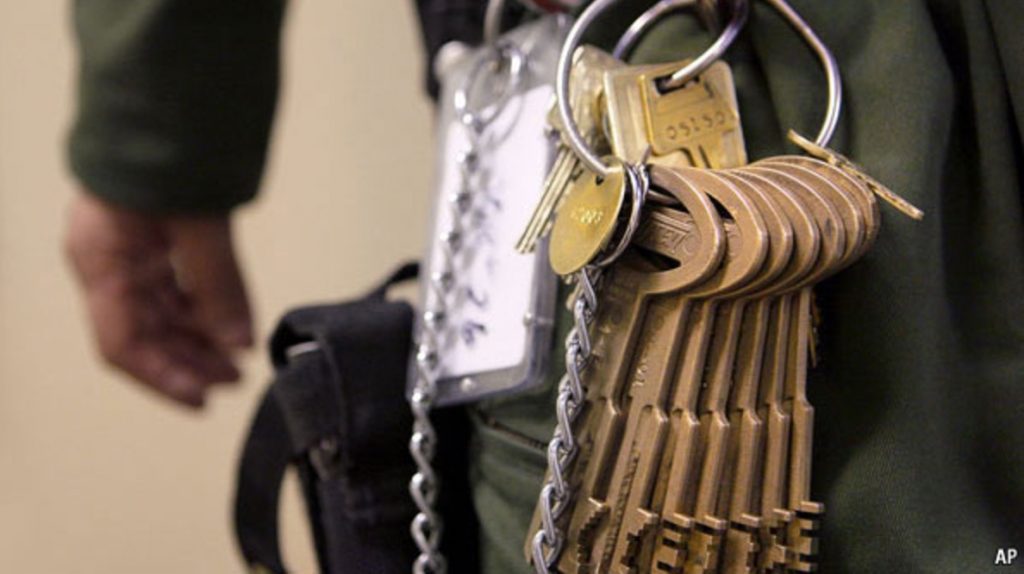 The double-edged-sword of getting out of prison.
The double-edged-sword of getting out of prison.
For those of us who follow incarceration and reentry issues, the inmate-created, inmate-run, prerelease program in Cumberland, Maryland, that was just approved by the Federal Bureau of Prisons will be something to keep an eye on.
Ideally, Young Men Incorporated (YMI), as the program is known, will prove that switching from curriculum enforcement to the much more coercive power of wisdom and teachable moments is the right way to reinvent prisoner reentry methodology.
Hitting your release date and getting out is a trip. Individual results may vary, but when it comes to civilian employees, frontline custody personnel, and prison administrators, soon-to-parole inmates often face disparagement and placating attitudes. The way some Badges see it, you’re still a criminal, soon to be protected by rights that weren’t there a couple of weeks ago. More than a few are just waitin’ for you to act special, by which I mean individual.
 The well-intentioned are represented too, of course. Some of the guards and staffers who spoke down to you one day actually demonstrate a slightly higher regard for you the week before you leave. Others see you as merely transferring from punishment to welfare. Some acknowledge they’re supposed to recognize that a milestone of some sort has been achieved, but they can’t seem to go further.
The well-intentioned are represented too, of course. Some of the guards and staffers who spoke down to you one day actually demonstrate a slightly higher regard for you the week before you leave. Others see you as merely transferring from punishment to welfare. Some acknowledge they’re supposed to recognize that a milestone of some sort has been achieved, but they can’t seem to go further.
Even having Badges and brass treat you a little better highlights an formidable aspect of prisoner reentry: the awkwardness of having been disqualified from society and now returning to it – but you haven’t left yet. Again, there are exceptions, but the reentry process typically contains some pretty discouraging social booby-traps. And naturally, some navigate the transition better than others, fraught as it is with negative reinforcement, posture, and pride.
 As a former teaching assistant to the civilian educator running Wasco’s reentry program, I saw how frustrated that teacher was when his efforts got obstructed, fiscally isolated, and marginalized amidst larger prison programing. To some administrators and staff, his inmate advocacy represented puppies, rainbows, little red wagons, and other things that criminals simply didn’t deserve.
As a former teaching assistant to the civilian educator running Wasco’s reentry program, I saw how frustrated that teacher was when his efforts got obstructed, fiscally isolated, and marginalized amidst larger prison programing. To some administrators and staff, his inmate advocacy represented puppies, rainbows, little red wagons, and other things that criminals simply didn’t deserve.
Most facility personnel don’t think about you much beyond “undeserving.” And all are trained to remain emotionally remote, which means that even their congratulatory sentiments can come off like sour grapes. Undercurrents of doubt and dismissal are inescapable (and where you’re going, you’d better get used to that).
Once you’re out, you find that larger society has the same struggle. It knows where you came from and often doesn’t quite know what to do with you. With America’s prison systems traditionally recycling offenders rather than rehabilitating them, truly effective reentry policies and practices have too long been viewed as “bleeding heart.”
YMI, however, is not designed to make it easier for inmates and guards to navigate their feelings. Instead, it’s intended to relax the custody-over-your-shoulder mandate, allowing inmates to follow a tailored-for-them prerelease curriculum. The idea is to lessen the specter of detention and the learned defensive mindset that accompanies it to make room for what the program is teaching to sink in.
It’s mission-critical to make that room, and I can say from experience that any de-escalation in resentment and poor custody coping skills will help. Besides, inmates teaching inmates to fill out apartment rental and job applications or get through the day without drinking is an idea that’s been on the shelf too long. Seeing what improved reentry outcomes might be achieved by allowing inmates to interpret for other inmates the whys of social values is a crucially important experiment.
With mass incarceration and the private prison industry no longer on the defensive, as they were under the Obama administration, some say the national dialogue on prison reform is over. So it’s not surprising that mainstream news outlets are failing to pick up on this story. (My own primary source was the black online newspaper, the San Francisco Bay View, though stylish Vice Media, Inc. supposedly has something in the works.) In the meantime, this is where we prison reform and criminal justice advocates come in, as we return to our blogs –amid renewed War on Crime rhetoric– in hopes of having our voices heard.
Many of us have the same thing to say as the men of YMI:
Sometimes you have to have been in the box to think outside of it.
.
